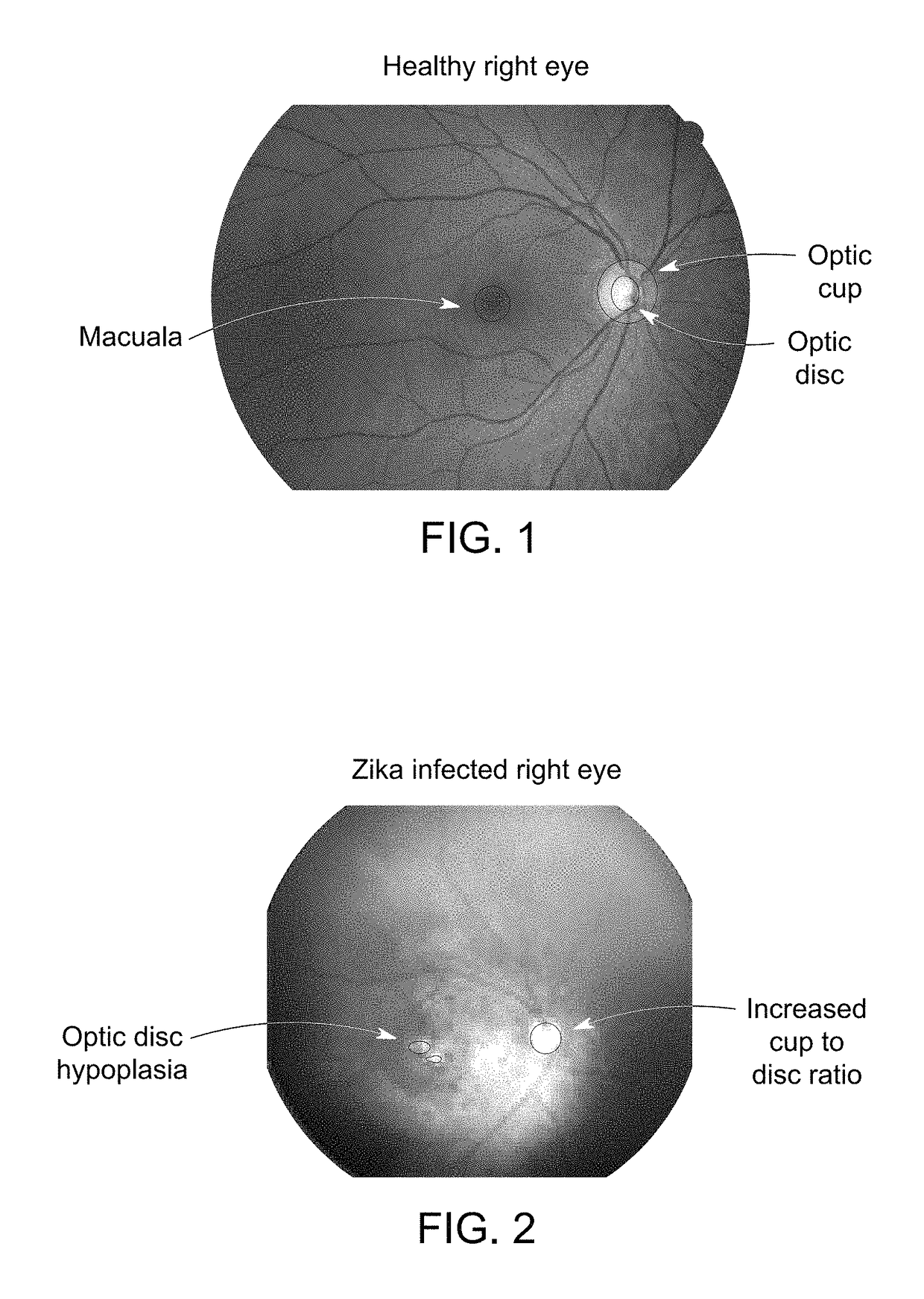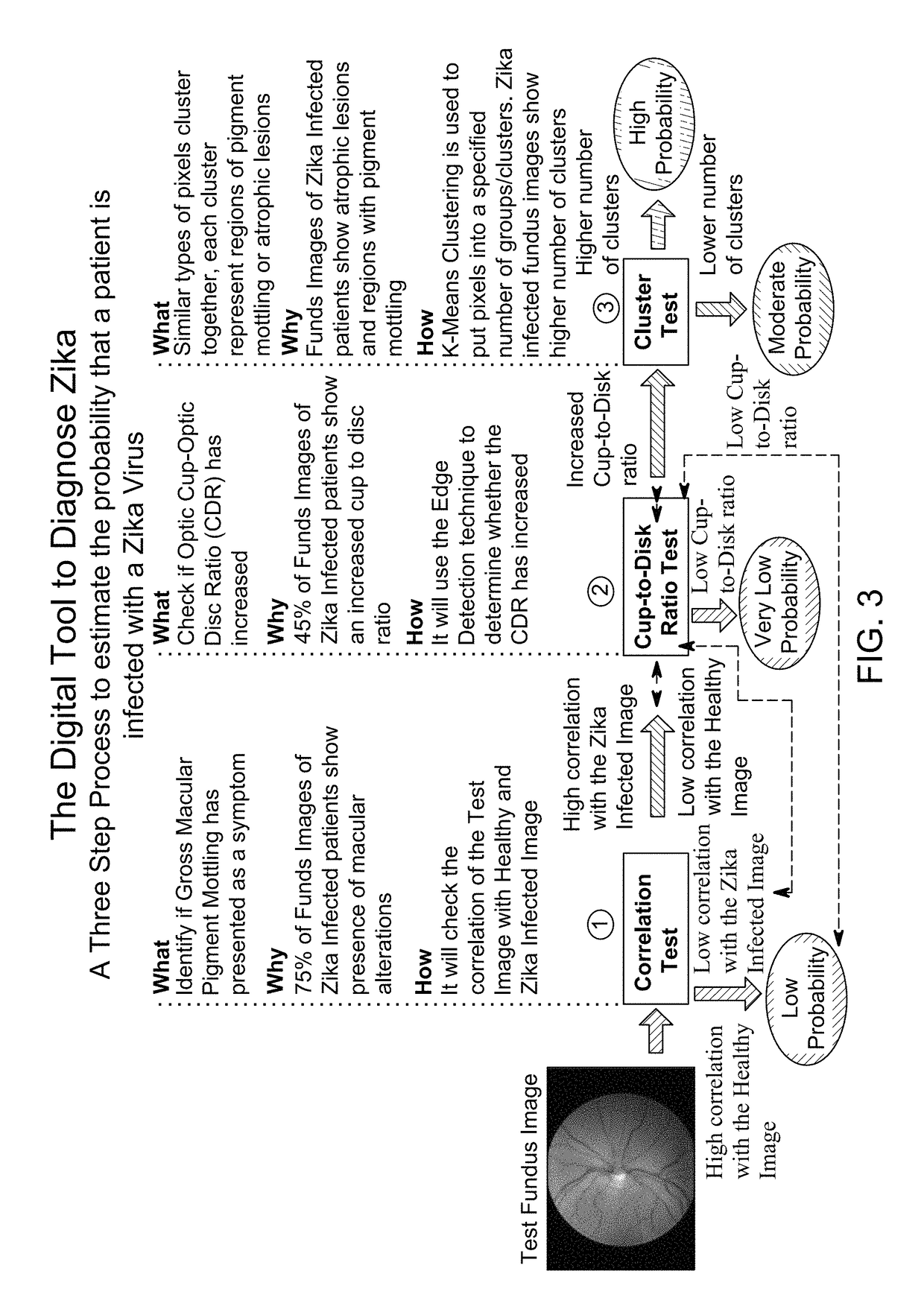Methods for diagnosing zika virus
- Summary
- Abstract
- Description
- Claims
- Application Information
AI Technical Summary
Benefits of technology
Problems solved by technology
Method used
Image
Examples
example
[0041]A dataset of 177 fundus images was examined: 7 images were from patients having Zika virus; 100 images were from patients without any eye diseases or disorders; 50 images were from patients having glaucoma; and 20 images were from patients having other degenerative eye diseases. After each imaged had been analyzed by the above described three step program, the program output successfully identified the 7 images from patients having Zika virus and had an overall 99.5% success rate with an average run time of 47 seconds.
[0042]The significance of this process can be found in the situation of a Zika Epidemic. Previously, tens of thousands of people sent their blood samples to the CDC or any equivalent testing lab and waited 4-14 days to determine their Zika virus status. However, now the individual or their healthcare provider can easily make the diagnosis using an app on their smart phone and within a minute of their time, can know their status. Public health officials can use th...
PUM
| Property | Measurement | Unit |
|---|---|---|
| Ratio | aaaaa | aaaaa |
Abstract
Description
Claims
Application Information
 Login to View More
Login to View More - R&D
- Intellectual Property
- Life Sciences
- Materials
- Tech Scout
- Unparalleled Data Quality
- Higher Quality Content
- 60% Fewer Hallucinations
Browse by: Latest US Patents, China's latest patents, Technical Efficacy Thesaurus, Application Domain, Technology Topic, Popular Technical Reports.
© 2025 PatSnap. All rights reserved.Legal|Privacy policy|Modern Slavery Act Transparency Statement|Sitemap|About US| Contact US: help@patsnap.com


